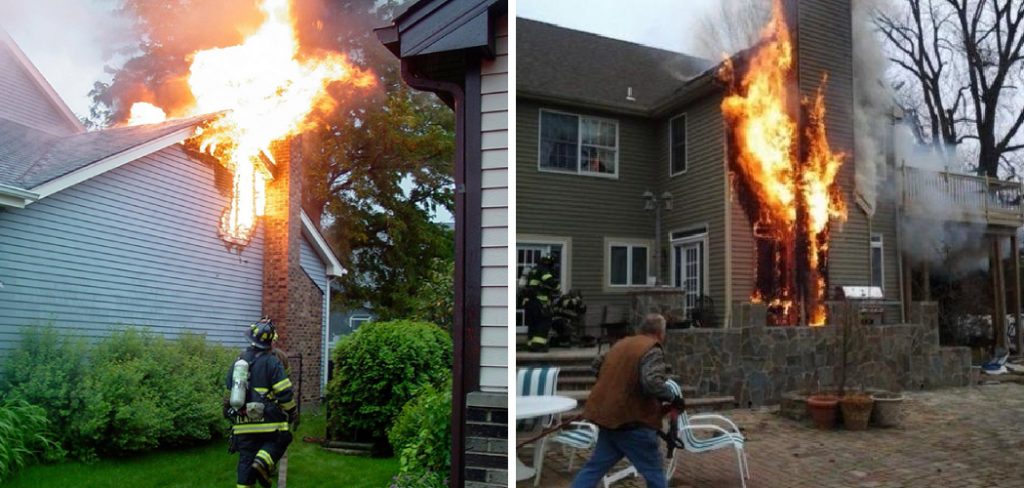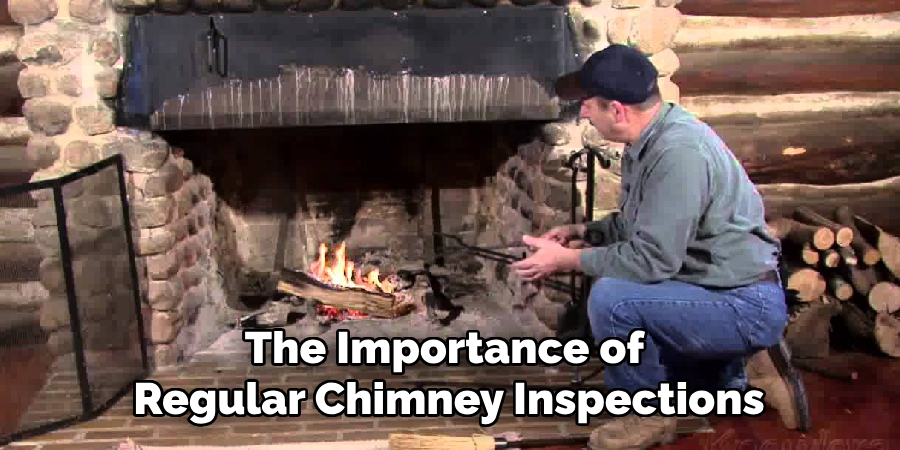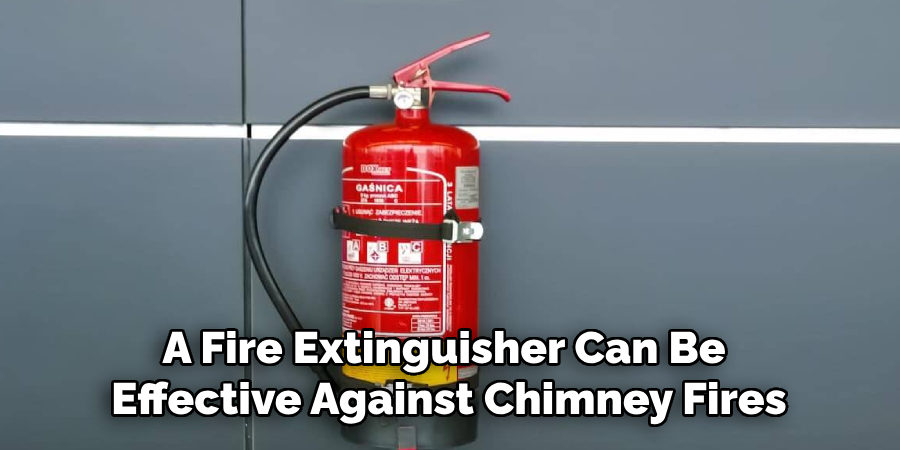Chimney fires are serious occurrences that demand immediate attention and swift action. Recognizing and responding to these fires promptly can prevent extensive property damage and safeguard lives. Chimney fires often produce loud cracking or popping noises, dense smoke, and an intense burning smell — all indicators that should never be ignored. The potential dangers of chimney fires extend beyond the chimney itself, as they can quickly spread to other parts of the home, leading to devastating consequences.

This article aims to provide a comprehensive guide on how to extinguish a chimney fire, emphasizing the critical steps and safety considerations needed to deal with such emergencies effectively. By understanding and following these guidelines, homeowners can be better prepared to act swiftly should a chimney fire occur, thereby minimizing harm and ensuring the safety of everyone in the household.
Recognizing Signs of a Chimney Fire
Identifying the signs of a chimney fire early can make a crucial difference in preventing extensive damage and ensuring the safety of your household. Common indicators of a chimney fire include loud cracking or popping noises emanating from the chimney, often mistaken for the sound of burning logs. Additionally, you may notice dense smoke billowing from the chimney or fireplace, accompanied by an intense, acrid burning smell. These signs are alarming and demand immediate action.
The importance of regular chimney inspections and maintenance cannot be overstated. Scheduling annual inspections with a professional chimney sweep can help detect and address potential fire hazards before they escalate. Regular cleaning removes creosote buildup – a highly flammable substance – and ensures that the chimney is in good working order.

When you suspect a chimney fire, taking safety precautions is paramount. Always prioritize the safety of household members by ensuring everyone exits the building promptly. Avoid using water to extinguish the fire, which can cause steam explosions. Instead, close the fireplace or stove damper to cut off the oxygen supply to the fire. Then, call emergency services immediately to handle the situation. By recognizing these signs and adhering to proper safety measures, you can effectively respond to chimney fires and protect your home.
How to Extinguish a Chimney Fire: Steps to Extinguish a Chimney Fire
Proper execution of specific steps can significantly mitigate the dangers associated with a chimney fire. The first and most immediate step is to close the fireplace or stove damper. Doing so reduces the airflow and oxygen supply to the fire, which can help slow its progression. However, it is crucial to exercise caution while performing this action to avoid any harm.
Once the damper is closed, prioritize immediately evacuating all household members. Ensure that everyone exits the building safely and remains at a secure distance. Alerting family members and anyone else in the house to the danger can save lives and avoid injuries.
After securing the safety of everyone in the home, promptly call emergency services. Contact the fire department and provide them with precise information about your location and the nature of the fire. Their expertise is essential in handling such emergencies effectively.

While waiting for emergency responders, monitor the chimney and the surrounding area for any signs of the fire spreading. Look out for smoke from walls, roofs, or adjacent structures. If it is safe, keep an eye on these areas to provide the fire department with up-to-date information when they arrive.
If a chimney fire extinguisher or suppressant is readily available and you feel confident using it safely, you may attempt to quell the flames. These extinguishers are specifically designed for chimney fires and can effectively contain the fire before it escalates. However, never take unnecessary risks; the primary focus should always be on the safety of all individuals and the prompt involvement of professionals.
Utilizing Extinguishing Methods
Overview of effective chimney fire extinguishing methods:
One method to effectively extinguish a chimney fire is by pouring salt onto the fire. Salt helps smother the flames by cutting off the oxygen supply, making it harder for the fire to continue burning. While this can be a quick and accessible solution, it is imperative to remain cautious and ensure that you do not get too close to the fire.
Another approach is to spray water into the chimney from a safe distance. This method can help cool down the fire and reduce its intensity. However, it is essential to use water sparingly, as excessive water can cause steam explosions or structural damage within the chimney. Always prioritize your safety by staying at a secure distance while using this method.
Using a Class A fire extinguisher can be another effective way to combat a chimney fire. These extinguishers are designed for ordinary combustibles such as wood and can effectively extinguish chimney fires. Ensure that the fire extinguisher is appropriate for the specific type of fire and follow all safety instructions provided with the device.

Safety precautions are paramount when employing any of these methods. Always prioritize the evacuation and safety of all household members before attempting to extinguish the fire. Do not take unnecessary risks; if the fire appears uncontrollable or you are unsure of the proper method, wait for emergency services to handle the situation. Your safety and the safety of your family should always come first.
After Extinguishing the Fire
Once the chimney fire has been safely extinguished, it is crucial to inspect the chimney and its surrounding structure for any signs of damage. Look for cracks, discoloration, or compromised masonry that may have resulted from the intense heat. Additionally, check for any lingering smoke or odors indicating hidden issues.
Next, focus on cleaning up any debris or residues the fire leaves. Remove any ash, soot, or partially burned materials from the fireplace or stove, ensuring it is completely safe to do so. Proper disposal of these remnants prevents potential re-ignition and maintains a cleaner environment.
Contacting a professional chimney sweep for a thorough inspection and necessary repairs is essential. Their expertise will help identify and address any structural weaknesses or creosote buildup that may not be visible to the untrained eye.
Finally, review and update your household’s fire safety practices and emergency procedures. Reflect on the recent event to ensure all family members know evacuation routes and proper responses in future emergencies.
Preventing Future Chimney Fires
Regular chimney maintenance and cleaning are essential in preventing future chimney fires. Scheduling annual inspections and cleanings with a professional chimney sweep ensures that creosote buildup and other potential hazards are identified and addressed promptly. Installing spark arrestors and chimney caps can further safeguard your chimney by preventing debris buildup and blocking animals or leaves from entering.
When using your fireplace or stove, always burn seasoned hardwood, which produces less creosote than unseasoned wood or other materials. Properly educating all household members about fire safety and emergency procedures is crucial. Ensure that everyone knows how to respond in case of a fire, the importance of regularly checking for signs of chimney issues and the correct way to operate and maintain the fireplace or stove. Taking these preventative measures can significantly reduce the risk of chimney fires and protect your home and loved ones.
Frequently Asked Questions (FAQs) about Chimney Fires
What Causes Chimney Fires?
Chimney fires are typically caused by the buildup of creosote, a highly flammable byproduct of burning wood. Factors contributing to creosote accumulation include burning unseasoned wood, inadequate chimney ventilation, and infrequent chimney cleaning.
How Can I Identify a Chimney Fire?
Common signs of a chimney fire include loud cracking or popping noises, dense smoke, and an intense, hot smell. Flames or embers may also be visible through the chimney or stove. If you notice any of these signs, evacuate immediately and call emergency services.
How Often Should I Have My Chimney Inspected and Cleaned?
A professional chimney sweep is recommended to inspect and clean your chimney at least once a year. Regularly cleanings may be necessary if you use your fireplace or stove regularly.
Can I Use a Regular Fire Extinguisher for A Chimney Fire?
While a Class A fire extinguisher can be effective against chimney fires, choosing the right type and following safety instructions is important. Fire extinguishers specifically designed for chimney fires are available and may offer safer and more efficient results.

What Should I Do if A Chimney Fire Breaks Out?
Firstly, close the damper to cut off the oxygen supply. Then, ensure everyone in the house evacuates safely and call emergency services immediately. Avoid taking unnecessary risks by attempting to extinguish the fire yourself unless you are confident and equipped to do so.
How Can I Prevent Chimney Fires from Occurring?
Preventative measures include using seasoned hardwood, installing spark arrestors and chimney caps, and ensuring regular chimney inspections and cleanings. Educate your household about proper fire safety and practices to maintain a safe fireplace or stove.
Are There Any Specific Materials I Should Avoid Burning in My Fireplace?
Yes, avoid burning unseasoned wood, cardboard, plastics, and glossy or colored paper, as these materials produce more creosote and harmful chemicals. Always use seasoned hardwood for safer and cleaner burning.
Conclusion
In conclusion, understanding how to extinguish a chimney fire involves several key steps and methods. Immediate evacuation and contacting emergency services are vital first actions. Utilizing extinguishing methods such as salt, water, and Class A fire extinguishers can be effective when done with caution and proper safety measures. After the fire is out, inspect for damage, clean debris, and consult a professional chimney sweep for a thorough examination and necessary repairs.
Preparedness and quick action are crucial in handling chimney fires. Regular maintenance, annual inspections, and educating household members on fire safety can significantly mitigate risks. Ensure proper materials are burned in your fireplace or stove and keep spark arrestors and chimney caps in place to prevent debris buildup. Following these guidelines, you can maintain chimney safety and prevent potential fires, safeguarding your home and loved ones.
About
Safety Fic is a distinguished figure in the world of Diy design, with a decade of expertise creating innovative and sustainable Diy solutions. His professional focus lies in merging traditional craftsmanship with modern manufacturing techniques, fostering designs that are both practical and environmentally conscious. As the author of diy, Safety Fic delves into the art and science of Safety Fic-making, inspiring artisans and industry professionals alike.
Education RMIT University
(Melbourne, Australia) Associate Degree in Design (Safety Fic) Focus on sustainable design, industry-driven projects, and practical craftsmanship. Gained hands-on experience with traditional and digital manufacturing tools, such as CAD and CNC software.
Nottingham Trent University
(United Kingdom) Bachelor’s in diyfastly.com and Product Design (Honors) Specialized in product design with a focus on blending creativity with production techniques. Participated in industry projects, working with companies like John Lewis and Vitsoe to gain real-world insights.
Publications and Impact
In diy, Safety Fic his insights on indoor design processes, materials, and strategies for efficient production. His writing bridges the gap between artisan knowledge and modern industry needs, making it a must-read for both budding designers and seasoned professionals.
